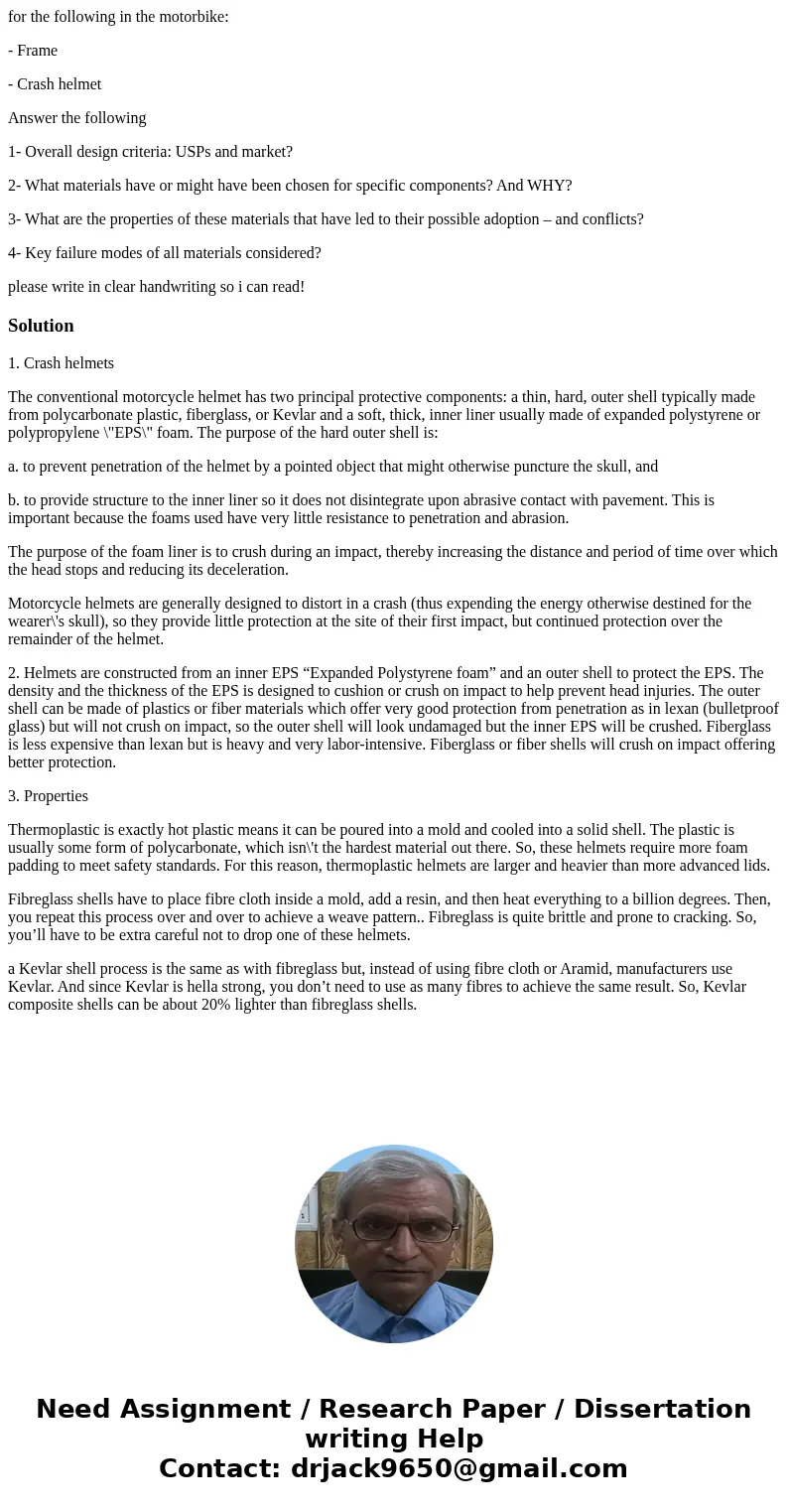for the following in the motorbike Frame Crash helmet Answ
for the following in the motorbike:
- Frame
- Crash helmet
Answer the following
1- Overall design criteria: USPs and market?
2- What materials have or might have been chosen for specific components? And WHY?
3- What are the properties of these materials that have led to their possible adoption – and conflicts?
4- Key failure modes of all materials considered?
please write in clear handwriting so i can read!
Solution
1. Crash helmets
The conventional motorcycle helmet has two principal protective components: a thin, hard, outer shell typically made from polycarbonate plastic, fiberglass, or Kevlar and a soft, thick, inner liner usually made of expanded polystyrene or polypropylene \"EPS\" foam. The purpose of the hard outer shell is:
a. to prevent penetration of the helmet by a pointed object that might otherwise puncture the skull, and
b. to provide structure to the inner liner so it does not disintegrate upon abrasive contact with pavement. This is important because the foams used have very little resistance to penetration and abrasion.
The purpose of the foam liner is to crush during an impact, thereby increasing the distance and period of time over which the head stops and reducing its deceleration.
Motorcycle helmets are generally designed to distort in a crash (thus expending the energy otherwise destined for the wearer\'s skull), so they provide little protection at the site of their first impact, but continued protection over the remainder of the helmet.
2. Helmets are constructed from an inner EPS “Expanded Polystyrene foam” and an outer shell to protect the EPS. The density and the thickness of the EPS is designed to cushion or crush on impact to help prevent head injuries. The outer shell can be made of plastics or fiber materials which offer very good protection from penetration as in lexan (bulletproof glass) but will not crush on impact, so the outer shell will look undamaged but the inner EPS will be crushed. Fiberglass is less expensive than lexan but is heavy and very labor-intensive. Fiberglass or fiber shells will crush on impact offering better protection.
3. Properties
Thermoplastic is exactly hot plastic means it can be poured into a mold and cooled into a solid shell. The plastic is usually some form of polycarbonate, which isn\'t the hardest material out there. So, these helmets require more foam padding to meet safety standards. For this reason, thermoplastic helmets are larger and heavier than more advanced lids.
Fibreglass shells have to place fibre cloth inside a mold, add a resin, and then heat everything to a billion degrees. Then, you repeat this process over and over to achieve a weave pattern.. Fibreglass is quite brittle and prone to cracking. So, you’ll have to be extra careful not to drop one of these helmets.
a Kevlar shell process is the same as with fibreglass but, instead of using fibre cloth or Aramid, manufacturers use Kevlar. And since Kevlar is hella strong, you don’t need to use as many fibres to achieve the same result. So, Kevlar composite shells can be about 20% lighter than fibreglass shells.

 Homework Sourse
Homework Sourse